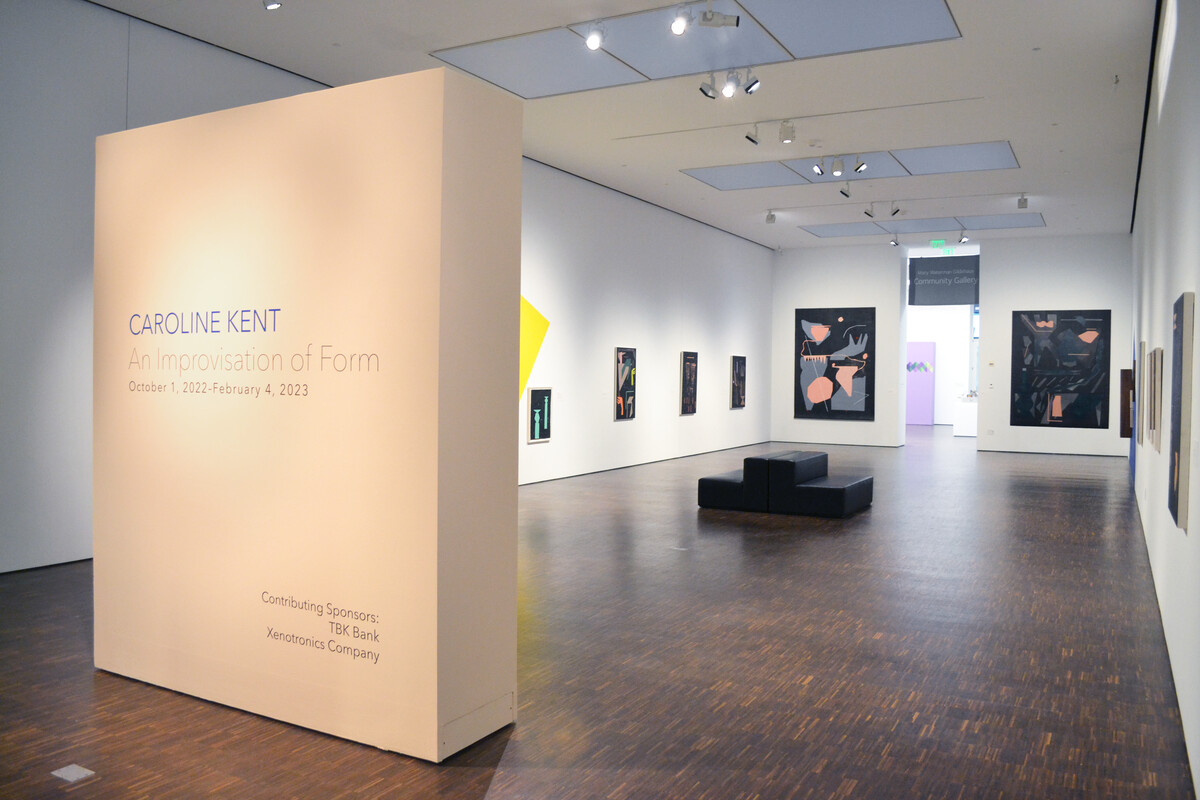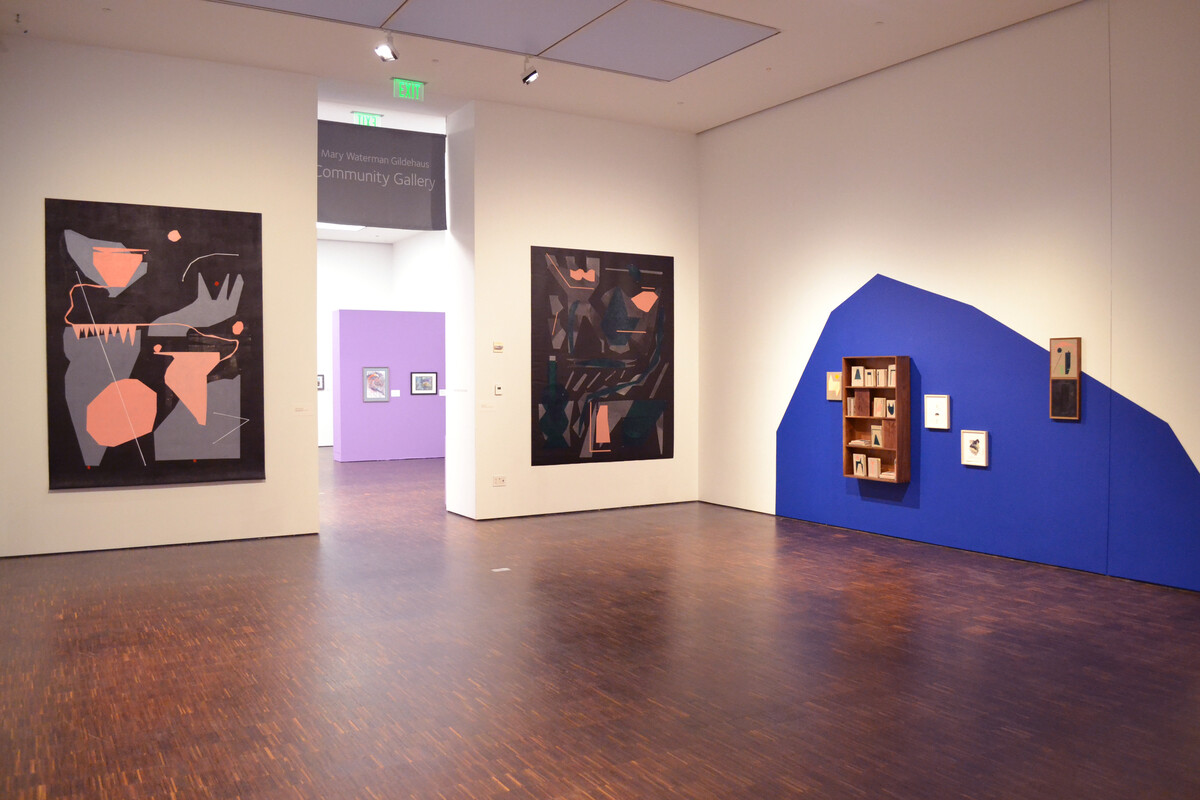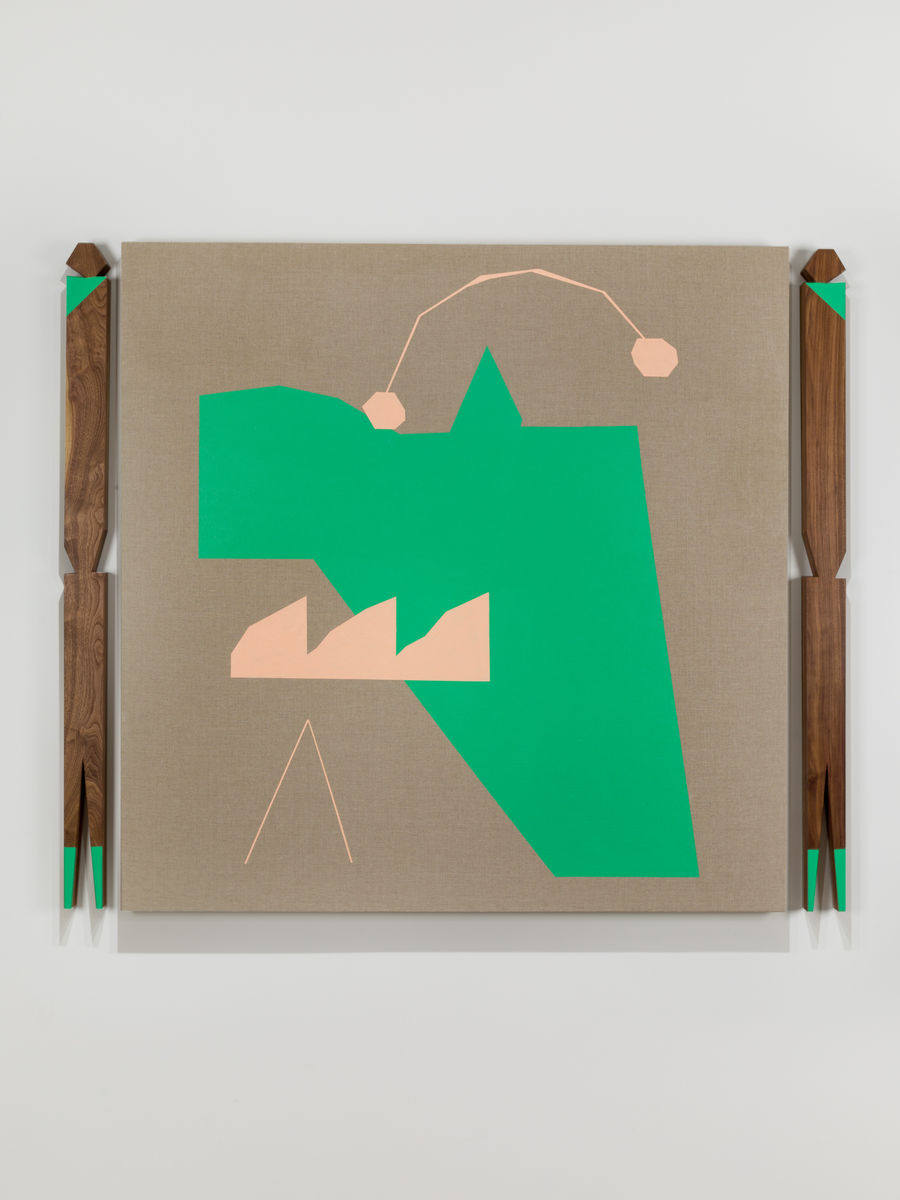
Installation view of “An Improvisation of Form” Courtesy of the Figge Art Museum.
“Language is a capacious subject to work through in a painting practice, says artist Caroline Kent. “It can act in a myriad of ways from elusive and hidden one moment to expressive and illuminating in another. This potential to act in unexpected ways is what keeps me engaged and curious.”
This fall, the Figge welcomes Chicago-based artist Caroline Kent as she presents an overview of her works created in the last decade. The installation will transform the Figge’s Katz Gallery into an immersive exhibition of paintings, site specific interventions, and sculptures, surrounding visitors in a unique synthesis of language and abstract forms.

Installation view of “An Improvisation of Form” Courtesy of the Figge Art Museum.
At the center of Kent’s practice is an invented vocabulary composed of geometric forms, hand-drawn marks, and color often set against a black ground. The shapes in her works act as illegible symbols in a diagram for an unknown place or mechanism, or a pictogram for which there is no cipher. The linework in her painting also seemingly strives to communicate through indecipherable calligraphic marks. Kent’s formation of a symbolic language poses questions to viewers about the purpose of a system of language which moves beyond normative structures of communication. Should all language be able to be understood? Are there benefits to a system of communication which defies translation? What is the relationship between abstraction and language?
“I grew up in the Midwest in Sterling, Illinois and want to present what an expanded painting practice looks like,” said Kent. “I want to demonstrate how language, translation and abstraction can all come together through painting in cohesive, legible or illegible ways. I want for the audience to be able to make connections between geography, creativity, imagination, and place.”

